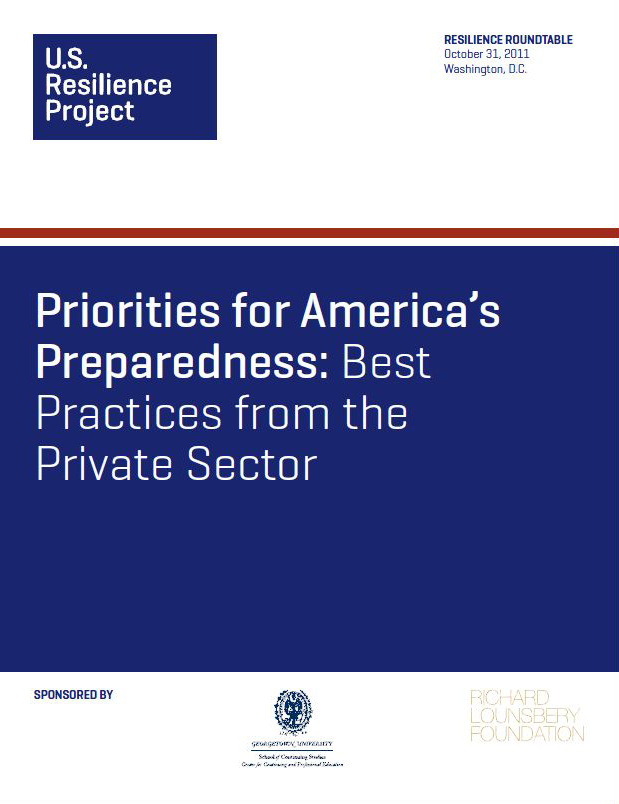You are here
U.S. Resilience Project - Priorities for America’s Preparedness: Best Practices from the Private Sector
Primary tabs
U.S. Resilience Project - Priorities for America’s Preparedness: Best Practices from the Private Sector
Tue, 2014-06-10 16:29 — Kathy Gilbeaux usresilienceproject.org - October 31, 2011
usresilienceproject.org - October 31, 2011
U.S. Resilience Project (USRP) reports are designed to showcase how public policy can benefit from private-sector best practices in security, business continuity, risk management, and disaster preparedness.
Harness the Power of Intelligent Networks and Social Media
The focus for national preparedness should be on creating situational awareness, enhanced decision-making and rapid response; Platforms like the U.S. Resilience System, that are based upon distributed intelligent social networks and crowd-sourcing, can enable far more agility and adaptability than a highly structured, hierarchical capability with significantly better outcomes at far less cost. Exploiting U.S. leadership in this area has the potential to create significant engagement in preparedness, disaster response, and regional resilience building.
In Priorities for America’s Preparedness: Best Practices from the Private Sector, the USRP brought together executives from some of America’s leading companies—Coca Cola, Hewlett Packard, John Deere, DuPont, Travelers, Walmart, Deloitte, Archer Daniels Midland, AT&T, Maersk—to offer examples of the kinds of capabilities and competencies that companies are creating to manage disasters and to identify their priorities for partnering with government.
The Bottom Line: The tools and processes that companies have developed to manage risk are not well known or well integrated into national response plans. Greater reliance on existing industry best practices can achieve competitiveness and security simultaneously, and free up government resources to safeguard areas that commercial best practices do not and often cannot address.

Recent Comments